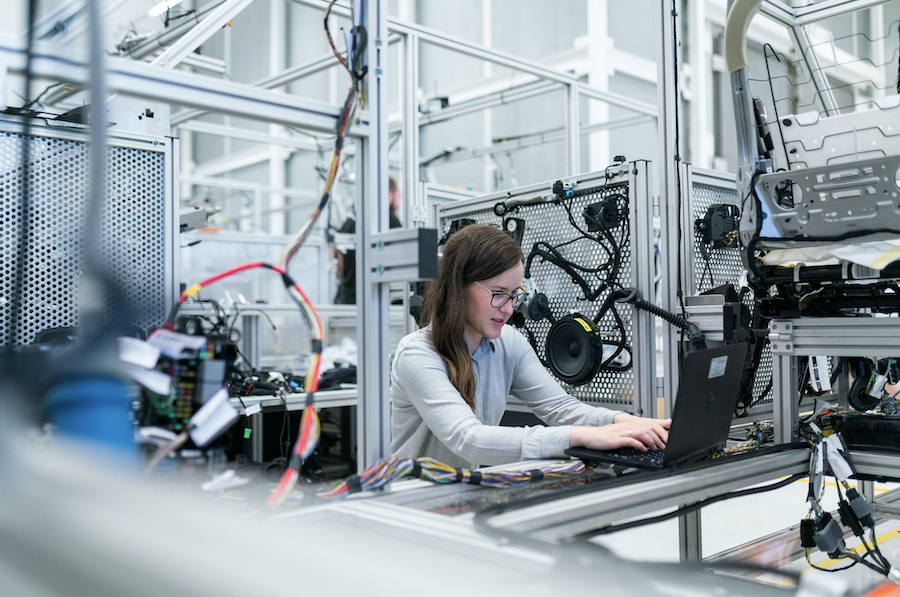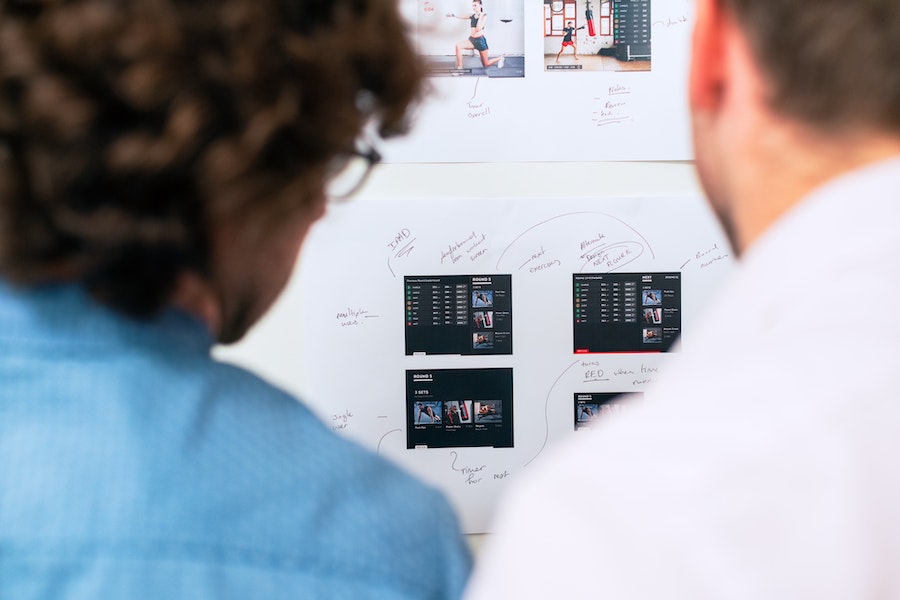Event Management – 11 New Effective Ideas for Throwing an Event
Good event management is the process of making sure every event you throw is a success.
In today’s fast-paced world, events have become more than just gatherings; they’re opportunities to connect, inspire, and leave a lasting impression.
Whether you’re planning a corporate conference, a product launch, or a community festival, the key to a successful event lies in innovation and a deep understanding of what resonates with your audience.
Forget the same old predictable formats – it’s time to inject some fresh ideas into your event planning.
This blog post explores 11 effective strategies to help you create truly memorable and impactful events.
From leveraging cutting-edge technology to prioritizing attendee well-being, we’ll delve into practical tips and innovative concepts that will elevate your next event to new heights.
Industry reports have found that event attendees and organizers are growing more accustomed to digital services — a trend that is not only here to stay, but will continue to sustain engagement for online experiences even as venues reopen their doors.
Get ready to ditch the ordinary and embrace the extraordinary as we uncover the secrets to throwing an event that everyone will be talking about.
That said, here are 11 event management ideas to help you move forward in the new normal.
1. Health and safety first
2. It’s the little things
3. Test, test, test
4. Smart marketing
5. Embrace holographic tech
6. Encourage connection
7. Curated networking
8. Gamification
9. Pay attention to catering
10. Keep learning
11. Post-event analysis and feedback
1. Health and safety first
A clear, detailed, and well-communicated health and safety policy not only helps you encourage more event attendees — it also helps ensure that you meet your event objectives without your team and attendees alike being stressed about infection risk.
Ensure that your venue has only the best hygiene standards in place, and that you’re working with event suppliers and planners to get the trust of your attendees.
Don’t be afraid to ask questions about protocols, like how often the venue is cleaned, where, and by how many personnel.
Of course, some attendees will care more about these measures than others. After all, there are still plenty of COVID-19 myths that hamper public health response and contribute to rising case numbers.
This makes it important to communicate your policies clearly, and to implement them strictly during the event itself.
For instance, if you’re imposing a vaccination requirement for all attendees, then be sure to indicate this clearly in your invitations.
You can also turn to wearable technology.
Though this type of tech has been used in the past for cashless transactions, particularly at music festivals, wearable devices can now also utilize geofencing technology to remind participants to maintain a safe distance from each other during your event.
2. It’s the little things
Aside from policies like this, it’s also worth paying attention to the little things we’ve come to see as “normal” in events, and thinking about how we can make these safer in the new normal.
For instance, a roving microphone at plenary sessions may no longer be a good idea. Consider inviting attendees to ask questions through an event app instead, or via social media.
Other small event details you’d need to rethink are registration queues, event lanyards, and even printed programs.
Many attendees might prefer using contactless options instead, like check-in kiosks and digital IDs.
You can also send them materials like lanyards ahead of time so that they can sanitize them at home.
3. Test, test, test
All this planning won’t be complete if you don’t take your plans out for a test-run before the event.
In the same way as we’ve normalized sound checks to ensure minimal technical trouble for concerts, conferences, and other events, be sure to test all the moving parts of your hybrid event, especially when it comes to health and safety.
Aside from doing a test-run of your livestreaming tech for at-home event participants, practice social distancing measures with your staff, and how crowd flow might work in your venue.
Watch out for possible people traffic jams, especially around main areas as well as restrooms, and adjust your floor plan and event protocols to suit.
4. Smart marketing
All of this planning can be integrated into your marketing process, as you can showcase your preparations in your event promotions.
In order to encourage more attendees, you can up the value proposition by creating thoughtful content about the issue or idea of your event, and generate conversations about it on social media.
These can also be integrated into a branded app, which works like a one-stop shop for everything attendees will need, including maps, exhibitor information, speakers, and schedules, as well as more advanced functions like live chats and networking rooms.
If you’re hoping to reach the local community, then you can also consider location-based marketing.
5. Embrace holographic tech
This one’s a little more futuristic, but one of the common complaints about hybrid and virtual events is that they aren’t as immersive as actually seeing a speaker in front of you and getting to interact with them.
Enter: Microsoft Mesh.
To create a Star Wars-like holographic self, Microsoft Mesh uses 3D-capture tech so that event managers can send avatars of presenters to anywhere in the world, allowing event participants to not only see and hear the speaker, but also to interact with them.
More than just the novelty of it, embracing tech like this can help improve the event experience and boost engagement.
6. Encourage connection
However, you don’t have to invest in tech like that if you can’t afford to. The most important factor to think about really is how to encourage connection.
Digital platforms — whether used for at-home participants or in-person attendees — can help improve participation by giving each person a voice in the discussion.
So, make sure to include functions that allow people to connect, like live chat, Q&A rooms, and smaller breakout sessions.
Allow your attendees to create profiles and even a portfolio of their work so they can talk to each other more efficiently.
And throughout the event, do be sure to let them know that they can take advantage of all these functions.
This way, they can maximize their ticket and get more out of the experience.
7. Curated networking
You might also want to consider curated networking in your event management plan.
This is when you use tech tools like AI to easily match attendees according to roles and interests — think buyers and suppliers, professors and students, and the like.
This way, your participants won’t have to wander through your venue (or app chat rooms) looking for valuable connections.
It also ensures that they have more value for their time and money: meeting new people won’t just happen by chance in line to the restroom or while waiting for food.
From there, small groups of people can then be encouraged to talk over socially distanced tables or in specialized chat rooms. You can even introduce features in your event app, like digital calling cards or shared drives for those groups.
8. Gamification
The growth of virtual and hybrid events over the past couple of years have brought about many benefits to the industry, but there is one drawback: More and more people are experiencing digital events fatigue.
One way to combat this, aside from ensuring meaningful connections through the steps above, is to gamify your event.
Gamification works the way it sounds. It is the process of adding gaming elements to increase engagement and participation, both for in-person events and virtual ones.
For instance, you can incorporate points systems for every time an attendee participates in a discussion or create mini competitions in relation to the topic or theme of your event.
In the end, you can reward attendees with fun prizes and even plaques of appreciation for their efforts.
9. Pay attention to catering
Food is a crucial part of everyday and, indeed, every event.
It’s one of the most important factors of effective event management.
The fact of the matter is, sometimes, it’s your catering that can make or break your event, so it’s worth paying attention to the food you serve and maintaining a good relationship with your supplier.
This is even more crucial today, as eating presents an extra risk to in-person attendees, who’ll need to take their masks off to do so.
That said, if your venue has an outdoor area, consider placing the eating area there. It’s also a good idea to avoid buffet set-ups, and instead go for individual portions.
Just be sure to opt for biodegradable disposable cutlery to lessen your carbon footprint.
You can also get creative with it — think skewers and food picks, or even mason jars that come with lids for safety.
10. Keep learning
One of the most important on the list. It’s important to keep learning.
This is especially true when it comes to event management.
We’re all probably tired of hearing how we’re living in unprecedented times, but we really are, and it’s important that we keep learning as we go.
After all, not everything we’ve learned about event management still applies today, and not everything we’ve written here will still be applicable in the coming years.
But if there’s one idea from this article you should always keep in mind, it’s this one: Never settle for doing things the way they’ve always been done before, because you need to keep learning.
And how do you do that? You have to pay attention to data at every step of the process.
In promotions, for example, you can look at which channels work and what kinds of messages generate the most interest.
You can also look at registration data to see which segments of your target participants you’re able to reach and how, so that you can apply these to under-reached segments and boost registration.
You can also send out feedback forms — which you can do through your branded event app — to collect data about what your attendees think about the event.
This way, you have a solid, data-backed basis for any improvements you might want to roll out in the future.
If you’re not sure where to start with data-gathering, consider trying out Bloc.
Ads impressions, clicks, and check-ins are all easy to see, and you pay per customer — which means it’s risk-free and budget-friendly.
11. Post-event analysis and feedback
The event doesn’t end when the last guest leaves. In fact, some of the most valuable insights and improvements come after the event is over.
Implementing a thorough post-event analysis is crucial for refining your event strategy and ensuring future success.
This involves gathering feedback from attendees, sponsors, and your event team.
Surveys, social media polls, and direct conversations can provide valuable perspectives on what worked well and what could be improved.
Analyze key metrics like attendance rates, engagement levels, and overall satisfaction scores. Use this data to identify trends, understand audience preferences, and pinpoint areas for optimization.
Did your marketing efforts reach the right people? Was the venue suitable? Did the catering meet expectations?
By carefully examining the post-event data, you can gain a deeper understanding of your event’s strengths and weaknesses, allowing you to make informed decisions and create even more impactful events in the future.
This continuous cycle of planning, execution, and analysis is essential for staying ahead of the curve and consistently delivering exceptional event experiences.
Summing up
In conclusion, the world of event management is constantly evolving, demanding creativity, adaptability, and a keen understanding of audience expectations.
By embracing these 11 key ideas, from prioritizing health and safety to conducting thorough post-event analyses, you can elevate your events from ordinary to extraordinary.
Remember that success lies not just in the grand gestures, but also in the meticulous attention to detail and the genuine effort to create meaningful connections.
Don’t be afraid to experiment with new technologies, explore innovative engagement strategies, and always prioritize the attendee experience.
By staying informed, embracing change, and consistently seeking feedback, you can craft events that not only meet but exceed expectations, leaving a lasting positive impression on all who attend.
The key is to view each event as a learning opportunity, a chance to refine your approach and create even more impactful and memorable experiences in the future.
So, go forth, be bold, be creative, and transform your next event into something truly special.














